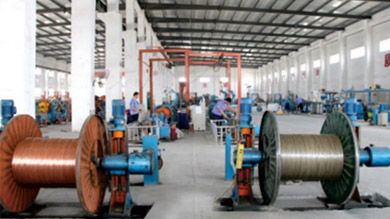11 月 . 03, 2024 11:26 Back to list
double eccentric flange butterfly valve
The Double Eccentric Flange Butterfly Valve Design, Benefits, and Applications
The double eccentric flange butterfly valve, also known as a double offset butterfly valve, is an innovative and efficient valve design that plays a crucial role in regulating fluid flow within various industrial applications. This type of valve is engineered to deliver enhanced performance through its unique construction and operational advantages.
Design Features
The double eccentric butterfly valve is characterized by its distinctive offset design, where the shaft is positioned outside the centerline of the body, and the disc pivot point is offset from the center of the seat. This design features two key eccentricities the first offset is between the valve disc and the shaft, while the second is between the seat and the shaft. This offset mechanism allows for a more effective sealing action, reducing wear and tear on the valve components.
The valve typically consists of a disc, a body, a shaft, and a flange connection. The disc, which controls the flow of fluid, can be rotated 90 degrees to either fully open or close the valve. The body is usually made from robust materials such as cast iron, stainless steel, or aluminum, making it suitable for a wide range of applications. Flanges on the valve allow for easy integration into pipeline systems, ensuring a secure and stable connection.
Advantages
One of the primary advantages of the double eccentric flange butterfly valve is its ability to minimize torque requirements. The design reduces the amount of force needed to operate the valve, which translates into lower energy consumption and extended actuator life. This makes it an efficient choice for large-scale applications where energy efficiency is a priority.
double eccentric flange butterfly valve

Additionally, the double eccentric design provides a tight shut-off capability, which is crucial in applications where leakage can lead to operational inefficiencies or safety hazards. The unique sealing mechanism reduces the risk of fluid contamination and ensures that the valve can handle high-pressure conditions while maintaining its integrity over time.
Another notable benefit is the valve’s lightweight construction compared to traditional gate or globe valves. This reduces the overall weight of the piping system, making installation easier and less costly. Moreover, the simple quarter-turn operation requires minimal maintenance, making it an economical choice for industries with limited operational downtime.
Applications
Double eccentric flange butterfly valves are widely used across various sectors, including water treatment plants, chemical processing, oil and gas, power generation, and HVAC systems. They are ideal for applications that require quick modulation of flow and a reliable sealing mechanism. The versatility of these valves means they can handle different types of fluids, including slurries and gases, making them suitable for diverse industrial processes.
In the water treatment industry, for instance, these valves are essential for controlling the flow of clean water and managing waste. In chemical processing, they are used to regulate substances with high corrosive properties, ensuring that operations can run smoothly without leakage.
Conclusion
The double eccentric flange butterfly valve is a vital component in various industrial sectors, offering numerous advantages such as reduced torque requirements, effective sealing capabilities, and lightweight design. Its versatility and efficiency make it an ideal choice for fluid control applications, ultimately contributing to more sustainable and reliable industrial processes. As industries continue to evolve, the role of such innovative valve designs will undoubtedly grow, providing solutions that enhance productivity and safety.
Share
-
Understanding the Differences Between Wafer Type Butterfly Valve and Lugged Butterfly ValveNewsOct.25,2024
-
The Efficiency of Wafer Type Butterfly Valve and Lugged Butterfly ValveNewsOct.25,2024
-
The Ultimate Guide to Industrial Swing Check Valve: Performance, Installation, and MaintenanceNewsOct.25,2024
-
Superior Performance with Industrial Swing Check Valve: The Essential Valve for Any SystemNewsOct.25,2024
-
Industrial Swing Check Valve: The Ideal Solution for Flow ControlNewsOct.25,2024
-
You Need to Know About Industrial Swing Check Valve: Functionality, Scope, and PerformanceNewsOct.25,2024